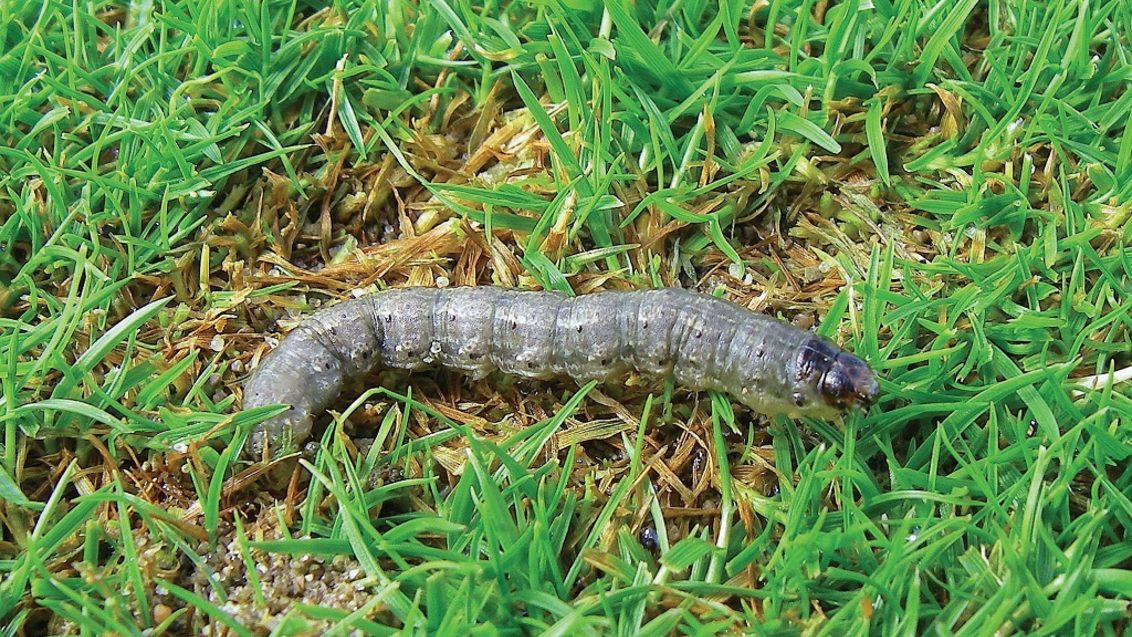Black Cutworm
Insect Pest
Identification
Black Cutworm caterpillar pest found mainly on Bent Grass golf greens. The larval stage appears as a smooth bodied, dark coloured caterpillar with longitudinal lines and brown to black spots on back and sides. When mature the adult black cutworm metamorphoses into a brown moth with a wing span up to 55 mm. The fore-wings are purple brown with black markings and hind-wings are grey with brown markings.
Life Cycle
Adult Black Cutworm moths lay their eggs in clusters in turf at night and are attracted to the light making turf surfaces around night-lit buildings more susceptible. Cutworm larvae hatch and usually feed during the night and take shelter during the day. These larvae typically cut of young plants at the crown level and pull them into a burrow before feeding hence the name cutworm. Cutworms have two generations per year and overwinter as pupae. Some species of cutworm produce enough generations that adult moths are present throughout the year.
Symptoms
Black Cutworm damage appears in low-cut turf when the caterpillar emerges from their subterranean burrow and feeds on the turf plants surrounding the burrow entrance. This results in a bald patch of turf surrounding the burrow, usually in patches about the size of a golf ball and often resembling a pitch mark. In plague proportions these patches can coalesce to destroy large areas of turf.
Considerations
Black Cutworm can take advantage of open core holes following renovation activities, taking up residence and using the core hole as its burrow. Ensure prompt recovery following renovation and consider insecticide applications as a precautionary measure. Mowing with a catcher and disposing of clippings away from susceptible turf areas will ensure eggs are removed from the turf surface the following morning after being laid.

